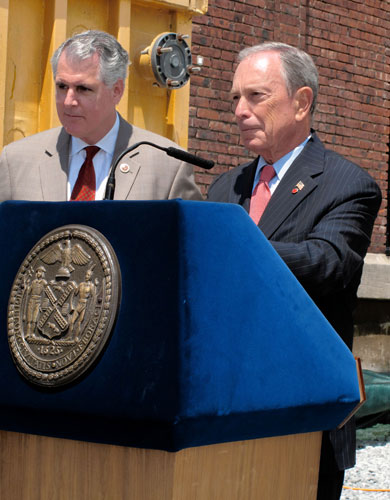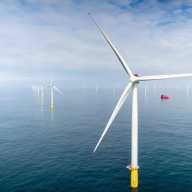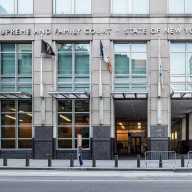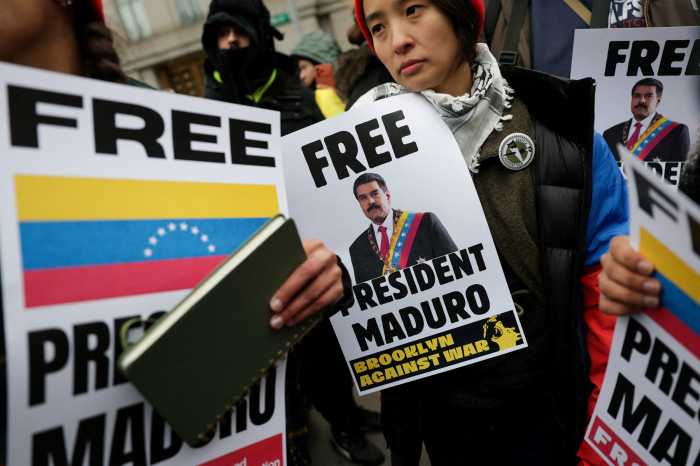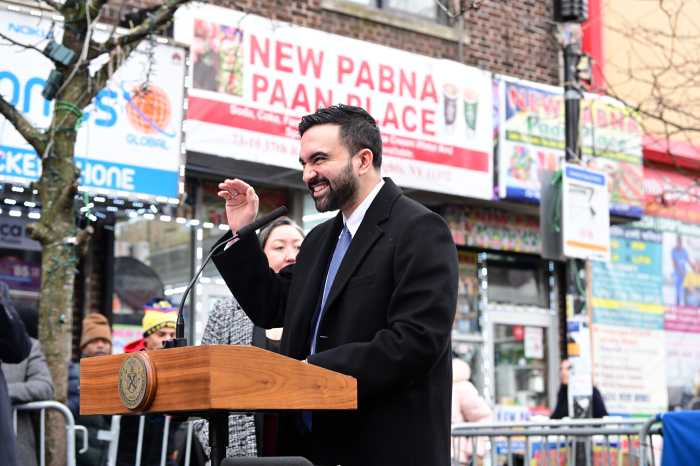Mayor Bloomberg said Monday the city stands firm on its own strategy to clean up the filthy Gowanus Canal and that it doesn’t plan to build the massive $78-million sewage holding tanks that will likely be part of the federal government’s proposed “Superfund” cleanup.
The administration says the plan to reopen the upgraded Gowanus wastewater pumping station before year’s end will reduce the discharge of raw sewage into the fetid waterway by 34 percent. This will boost the water quality by pushing out sewage to a nearby treatment plant, instead of letting it spew into Brooklyn’s nautical purgatory during heavy storms. The city’s $190-million effort, which started in 2009 as a $150 million plan, will be completed later this year.
“When this rehabilitative wastewater pumping station goes online later this year, it will have the capacity to pump 30 million gallons of wastewater a day to the Red Hook wastewater treatment plant,” said Department of Environmental Protection Commissioner Carter Strickland. “That’s an increase of more than 10 million gallons over its previous capacity.”
But the Environmental Protection Agency, the federal agency charged with finding those responsible for polluting the waterway and making them pay for its cleanup, said it’s a good start, but it’s not good enough. Its plan calls for two underground sewage holding tanks that it claims would reduce the amount of raw sewage spewing into the canal by 58 to 74 percent. The proposal has one of the tanks buried underneath the neighborhood’s beloved Thomas Greene Playground and adjoining Douglass-Degraw Pool.
The Bloomberg administration does not agree. In the past, the mayor has blasted the federal cleanup of the waterway as overly litigious and too slow.
“We don’t think [the sewage storage tanks] are necessary and they’re certainly not necessary under a pool,” said Strickland.
But if the city doesn’t comply with the feds’ plan, it may up in court anyway, although city officials wouldn’t say it is ready to square off with the feds just yet.
“It’s too early to suggest anything like that,” said Strickland. “A scientific discussion has to happen based on the sampling we did [before this would happen.]”
Gowanus neighbors and activists, who say they deal with the stench and sewage on a daily basis, said that Bloomberg’s plan isn’t going to cut it.
“It’s not good enough what they are proposing. It’s a part of it, but we need to do more,” said Lizzie Olesker, a member of Friends and Residents of Greater Gowanus. “Why not work with the federal government instead of making them your enemy?”
Despite the administration’s opposition to the Superfund proposal, which may require construction of the tanks at the middle and head of the canal, Bloomberg says the city will work with the Environmental Protection Agency to get the waterway cleaned up.
“I thought that we could clean it up better and quicker than the Superfund,” said the mayor before a crowd at the canal’s wastewater pumping station Monday. “We thought it would be better for us to do it. We lost that battle, so now we’re working with the federal government. We’ll do whatever is required to get it done.”
The on-again, off-again Gowanus Canal flushing tunnel, which has been shut down since 2010 for repairs, will also be reactivated later this year. The 1.2-mile tunnel, originally constructed in the 1900s, was designed to pump stagnant water from the head of the canal into Buttermilk Channel, but since the late 1990s it has sent water in the opposite direction.
“The improved tunnel will move water at an average of 215 million gallons of healthy, oxygenated water to the head of the canal everyday,” said Strickland.
The administration’s $190-million plan also includes the installation of 600 curbside gardens, designed to soak up rainwater, and the construction of a sewer pipe that will run underneath Third Avenue in Park Slope. This pipe will collect storm water from the streets, mitigating the flow into the existing system and reduce runoff into the canal, said city officials.
“The objective here, short term, in our lifetime, is to make it so you could boat in it,” said the mayor. “It would not be a good idea to swim in it.”
Reach reporter Natalie Musumeci at nmusumeci@cnglocal.com or by calling (718) 260-4505. Follow her at twitter.com/souleddout.


